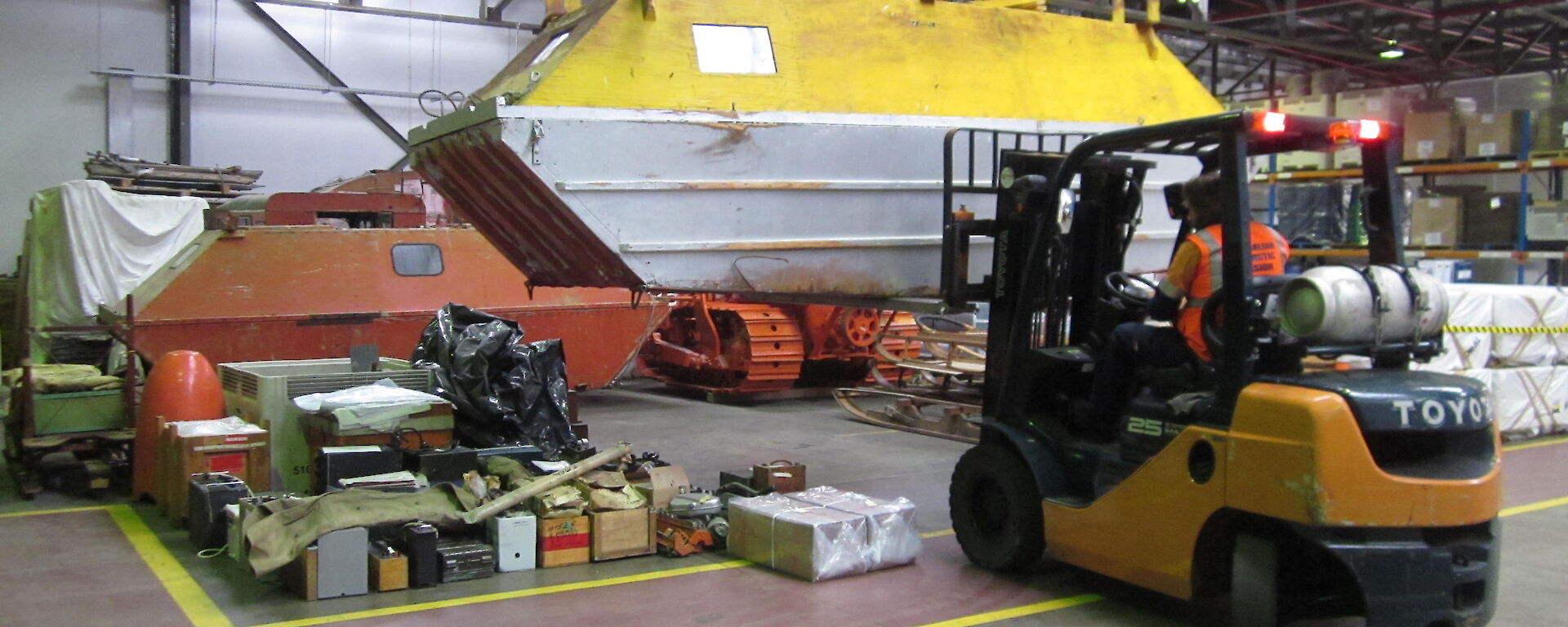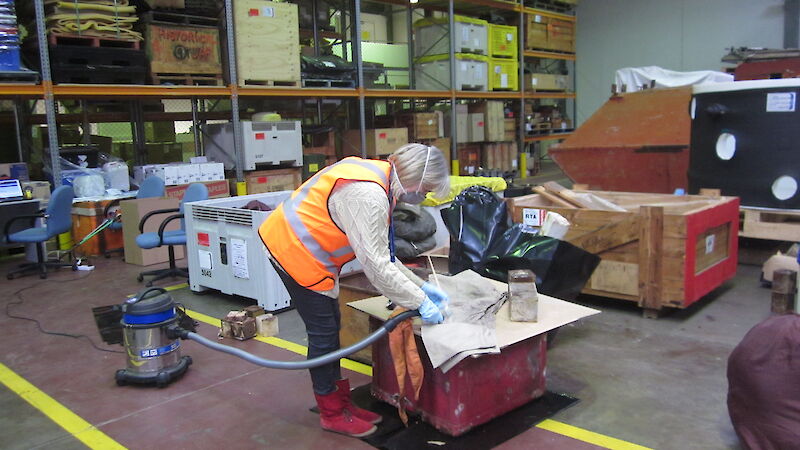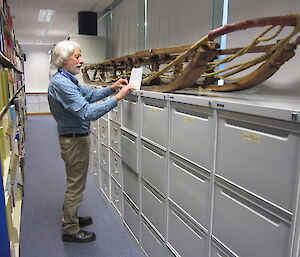What do baling hooks, tins of Vegemite, a pair of Russian boots, a Weasel, and an airplane wheel have in common? They are all part of a diverse artefacts collection at the Australian Antarctic Division.
With artefacts originating from the Heard Island sealing days, Douglas Mawson’s Cape Denison expedition, and the Australian National Antarctic Research Expeditions (ANARE), the Australian Antarctic Division has an extensive and eclectic heritage collection.
The artefacts range from delicate textiles to large machinery and provide an excellent illustration of Australia’s Antarctic journey through time. However, the Antarctic Division is not a collecting institution and does not have the in-house expertise or resources to properly conserve and manage artefacts.
To address this problem, the Division established a Heritage Collection project in May 2014, in partnership with the National Museum of Australia (NMA). The project is systematically assessing the significance and condition of the artefacts and developing recommendations to ensure the collection is properly managed into the future.
The project has three stages:
- audit the collection;
- develop methodology to assess the significance of the artefacts; and
- apply the methodology and develop recommendations for future care arrangements.
The first stage is nearing completion, with the systematic audit of over 700 artefacts held at the Kingston Headquarters. The audit was undertaken by a consultancy team headed by Anne McConnell, a Tasmanian-based heritage specialist who has previously worked in Antarctica. Anne’s auditing team also included Linda Clark, who has extensive heritage and Antarctic experience, and Debbie Robertson, who has previous experience with the Antarctic Division’s artefacts collection and database. The audit involved researching and photographing each artefact and entering this information into the Division’s heritage database.
It hasn’t been an easy task for the team. As many of the objects had no information about their history or use, the assistance of some long term Antarctic Division employees or ex-employees was sought. Without their invaluable assistance, so much background information or provenance would have been lost. There are still a small number of items requiring more information, which we are pursuing.
At the same time, the NMA organised for a significance report, undertaken by Bernadette Hince, on a sample of the Antarctic Division’s heritage collection. The initial report has researched the significance of a selection of objects, breaking the collection down into four major historical eras.
- The sealing era: sealing activities on Heard Island (commencing around 1855) and Macquarie Island (commencing 1810).
- ‘Heroic’ era: late 19th to early 20th Century, including Sir Douglas Mawson’s Australasian Antarctic Expedition of 1911–14.
- ‘Pre-ANARE’ period: 1915–1946, which includes the British Australian New Zealand Expeditions of 1929–30 and 1930–31.
- The modern era: ANARE (1947–2002) and today’s Australian Antarctic program.
The methodology used in the report will be applied to the remainder of the collection by the NMA in conjunction with the Antarctic Division, to help develop recommendations on the future location, curation, conservation and display of the collection.
The project so far has literally been a journey of discovery. Many boxes and containers had not been inspected for years and each one has held many interesting artefacts that help tell Australia’s Antarctic story. While some discoveries have been exciting, like the collection of dog-haul and man-haul sledges, others have been very disappointing, such as finding water damage to a 1960s ration box. All up, over 400 artefacts are new entries into the heritage database.
Part of the project has involved, and will continue to involve, consulting with a variety of museums and other important stakeholders, such as the ANARE Club. For further information contact deborah.bourke@aad.gov.au.
Deborah Bourke
Senior Policy Adviser, Australian Antarctic Division
Read the story behind one of our heritage items, a small red caravan called Aneata, the ‘Ice Maiden’ of Antarctica.




